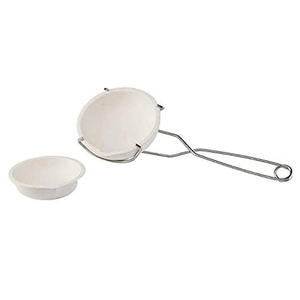Introduction to Ceramic Products: Bridging Custom with Modern Product Scientific Research
Ceramic items have actually advanced much beyond their historical roots in ceramic and art, becoming vital parts in aerospace, electronics, medication, and power systems. Defined by their not natural, non-metallic make-up and high-temperature handling, modern-day ceramics supply unmatched performance in severe environments. Whether as insulators in silicon chips, implants in human joints, or architectural products in jet engines, ceramic items today stand for a blend of ancient craftsmanship and advanced nanotechnology.
(Ceramic Products)
Classification and Functional Characteristics of Ceramics
Ceramic products can be broadly classified right into standard (e.g., blocks, ceramic tiles, porcelain) and advanced (e.g., silicon nitride, zirconia, alumina) kinds based on make-up and application. Standard porcelains are valued for their affordable, sturdiness, and aesthetic appeal, while advanced ceramics excel in mechanical toughness, thermal resistance, and electrical behavior. Their distinct mix of firmness, rust resistance, and bio-inertness makes them indispensable where metals and polymers fall short, especially under high stress and anxiety, temperature level, or chemical direct exposure.
Production Processes and Technological Advancements
The manufacturing of ceramic products includes powder synthesis, shaping, sintering, and ending up– each step essential to accomplishing wanted properties. Developments such as spark plasma sintering, additive manufacturing, and colloidal processing have actually considerably boosted dimensional accuracy, microstructural control, and functional integration. These developments enable intricate geometries and multi-functional designs that were previously impossible with traditional techniques like slip casting or dry pressing. Such progression has expanded the scope of ceramic applications throughout sectors.
Duty in Electronics and Semiconductor Industries
In the electronics field, ceramic products work as substratums, capacitors, sensing units, and shielding elements as a result of their excellent dielectric residential properties and thermal security. Multilayer ceramic capacitors (MLCCs), as an example, are found in nearly every electronic device, from smart devices to electric cars. Alumina and aluminum nitride substratums are widely made use of in power components and LED heat sinks, making certain efficient thermal administration and long-lasting integrity in high-performance systems.
Clinical Applications: Bioceramics and Implantable Devices
Bioceramics represent among the fastest-growing sections in the ceramic product market. Products like hydroxyapatite, alumina, and zirconia are utilized in dental implants, bone substitutes, and joint prostheses due to their biocompatibility and use resistance. Unlike metal implants, ceramic-based devices lower ion leaching and reduce allergies, making them excellent for long-lasting implantation. Current growths in porous scaffolds and bioactive glass-ceramics additionally enhance cells combination and regenerative capacities in medical treatments.
Aerospace and Defense: Ceramics in Extreme Conditions
Ceramic items play an essential function in aerospace and protection systems where products must endure severe temperatures, stress, and influence. Components such as wind turbine blades, projectile nose cones, and thermal security tiles rely on ceramics like silicon carbide and zirconium dioxide to maintain structural stability under hypersonic speeds and re-entry problems. Their lightweight nature combined with high compressive toughness also makes them attractive for shield plating and ballistic protecting in army applications.
Environmental and Power Technologies Making Use Of Ceramics
( Ceramic Products)
From fuel cells to nuclear waste encapsulation, ceramic items are central to sustainable power and ecological removal technologies. Strong oxide gas cells (SOFCs), as an example, depend on yttria-stabilized zirconia electrolytes to make it possible for efficient energy conversion at high temperatures. In nuclear engineering, porcelains like SYNROC (artificial rock) are created to paralyze radioactive isotopes in stable crystalline matrices. Furthermore, catalytic ceramic membrane layers are being deployed in water purification and industrial emission control, adding to global sustainability efforts.
Market Trends and Global Demand Drivers
The worldwide ceramic products market is seeing durable development, fueled by demand from electronics, healthcare, auto, and renewable energy markets. Asia-Pacific continues to be the biggest producer and consumer, driven by China’s manufacturing prominence and Japan’s leadership in innovative ceramics. North America and Europe adhere to very closely, sustained by R&D financial investments in wise porcelains and environment-friendly technology campaigns. As automation and digital layout devices come to be extra incorporated into ceramic production, production performance and personalization abilities remain to rise.
Challenges and Future Instructions in Ceramic Product Advancement
In spite of their benefits, ceramic items deal with obstacles consisting of brittleness, minimal ductility, and high processing prices. Continuous study focuses on improving strength via nanostructuring, composite support, and self-healing mechanisms. Recycling and end-of-life healing also remain areas for renovation, specifically in high-value but difficult-to-reprocess components. Looking forward, the convergence of AI-guided material style, 3D printing, and smart picking up will certainly redefine exactly how ceramic items are crafted, produced, and used throughout future industries.
Vendor
Advanced Ceramics founded on October 17, 2012, is a high-tech enterprise committed to the research and development, production, processing, sales and technical services of ceramic relative materials and products. Our products includes but not limited to Boron Carbide Ceramic Products, Boron Nitride Ceramic Products, Silicon Carbide Ceramic Products, Silicon Nitride Ceramic Products, Zirconium Dioxide Ceramic Products, etc. If you are interested, please feel free to contact us.(nanotrun@yahoo.com)
Tags:
All articles and pictures are from the Internet. If there are any copyright issues, please contact us in time to delete.
Inquiry us

